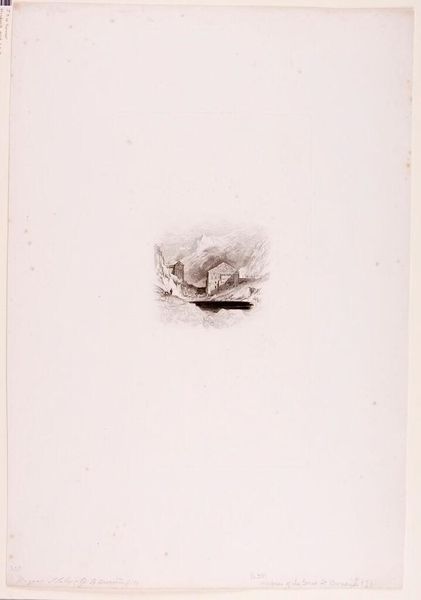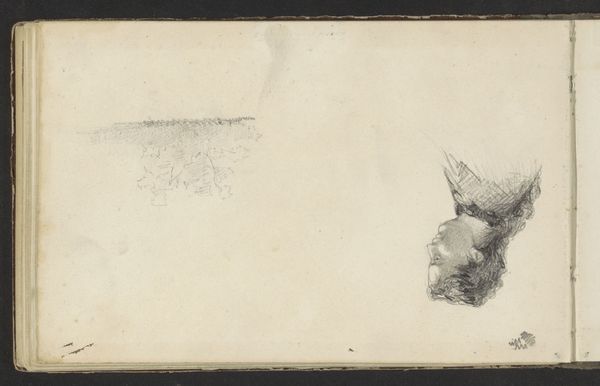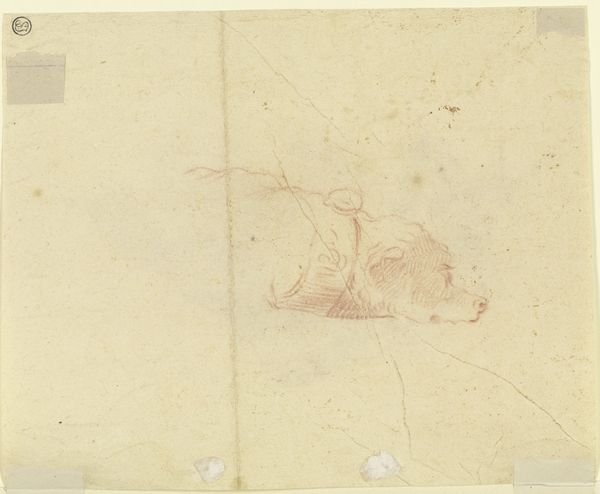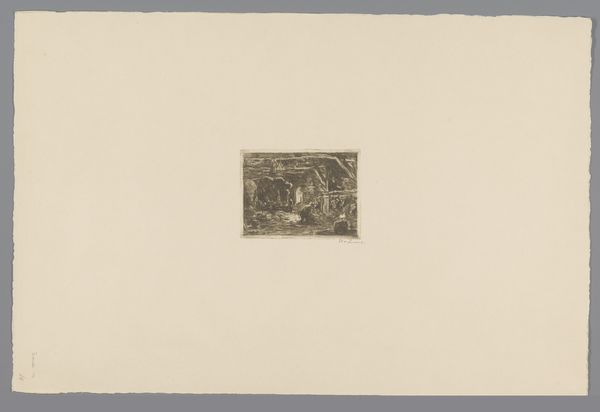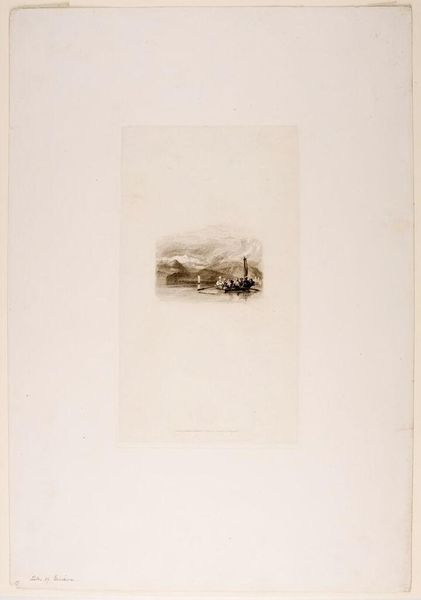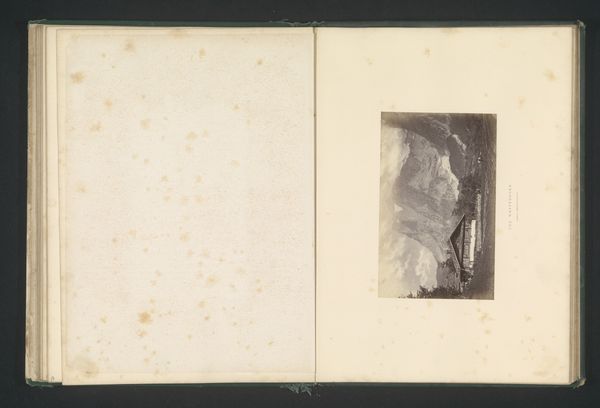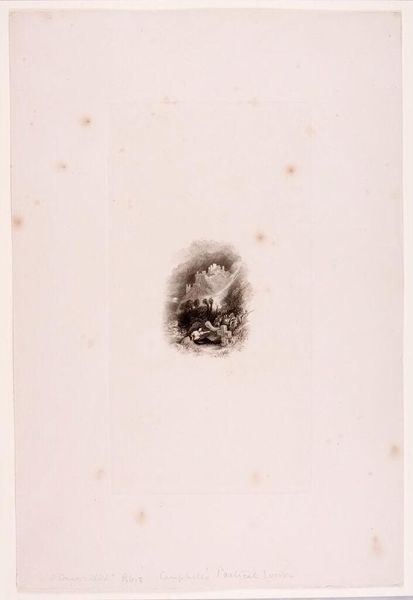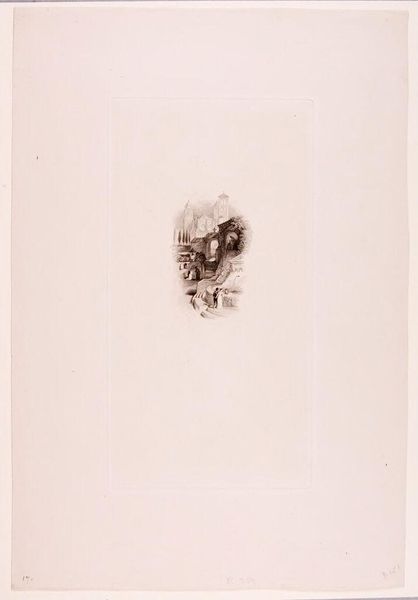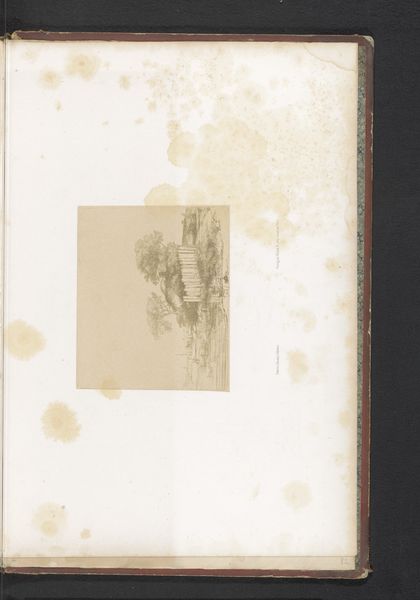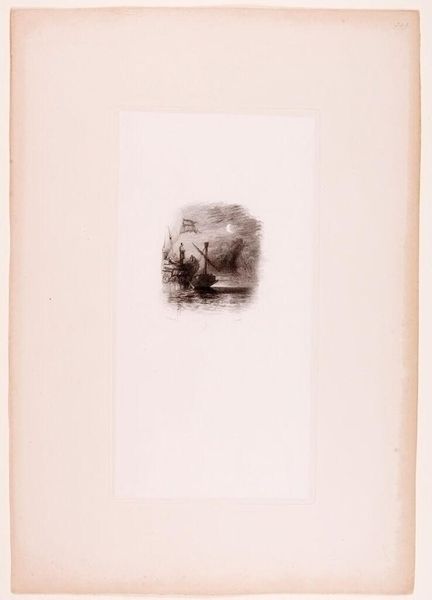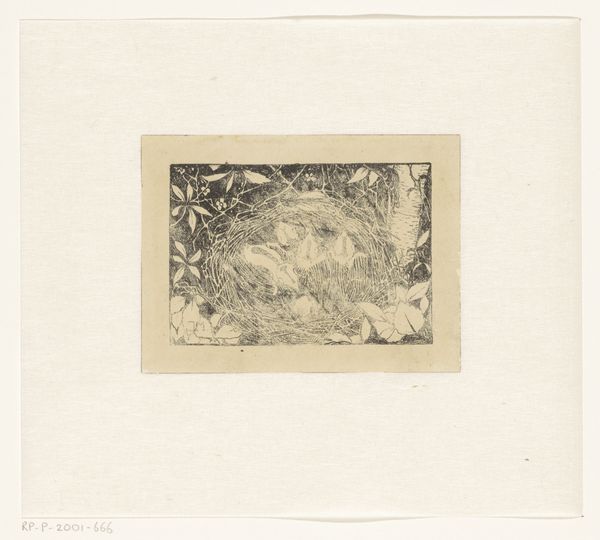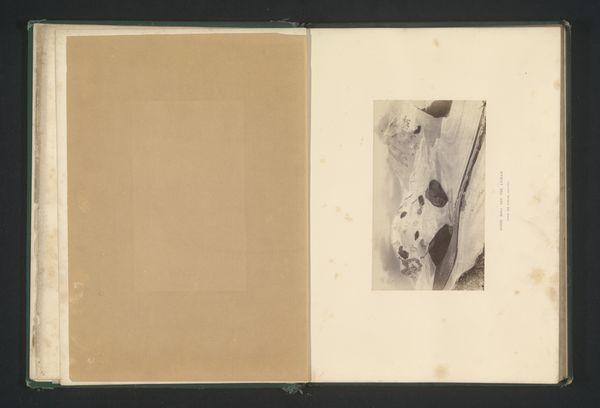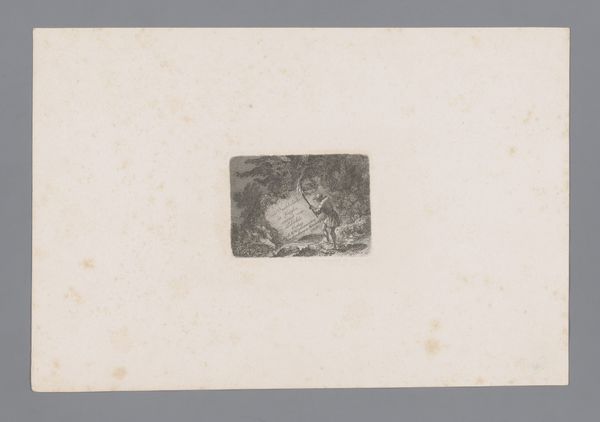
drawing, etching, paper, ink
#
portrait
#
drawing
#
animal
#
etching
#
paper
#
ink
#
realism
Dimensions: height 52 mm, width 63 mm
Copyright: Rijks Museum: Open Domain
Curator: This is "Head of a Wolf," by Eugène Verboeckhoven, made sometime between 1808 and 1881. The medium is etching in ink on paper, and it's currently held in the Rijksmuseum. Editor: The immediate impression is one of intensity, wouldn’t you agree? There’s a certain sharpness in the rendering of the wolf's features, those pointed ears, those teeth… It’s raw. Curator: Absolutely, but it is important to situate the image in the context of the 19th century and understand what role animals—particularly wild animals—played in society. It's not just about a wolf. What power dynamics might the artist be implying through this seemingly simple portrait? How are human hierarchies reflected in the portrayal of nature? Editor: Fair point. Given that Verboeckhoven was known as an animal painter, what can we learn about his craft from this etching? I’m struck by the precision and control of the line work. It's not just representational; it is a display of skill, of knowing how to work with those inks to build up texture and form. Curator: Precisely! The textures are striking. And thinking about this piece today, doesn’t it bring up conversations around wildlife conservation and the ethical treatment of animals? What did it mean to portray a wolf then versus now? The meaning isn't static. Editor: The scale of this etching also interests me. Given its small size, it suggests intimacy, something collectible perhaps? Etchings were more easily reproducible, circulating images. How might that have affected its consumption and perceived value? Was this an attempt to democratize the access to images of animals? Curator: It’s crucial that we continually question how these artworks reflect the complex power dynamics of their time, considering how the act of observing and documenting non-human animals might be entangled with sociopolitical ideologies. Editor: Yes, and interrogating the materials and methods – the physical making – can reveal overlooked connections to society and culture at large. Curator: Agreed. Seeing this wolf’s head through the combined lenses of artistic context and material examination opens so many questions. Editor: Indeed. The intersection of material process and artistic agency continues to resonate even today.
Comments
No comments
Be the first to comment and join the conversation on the ultimate creative platform.

